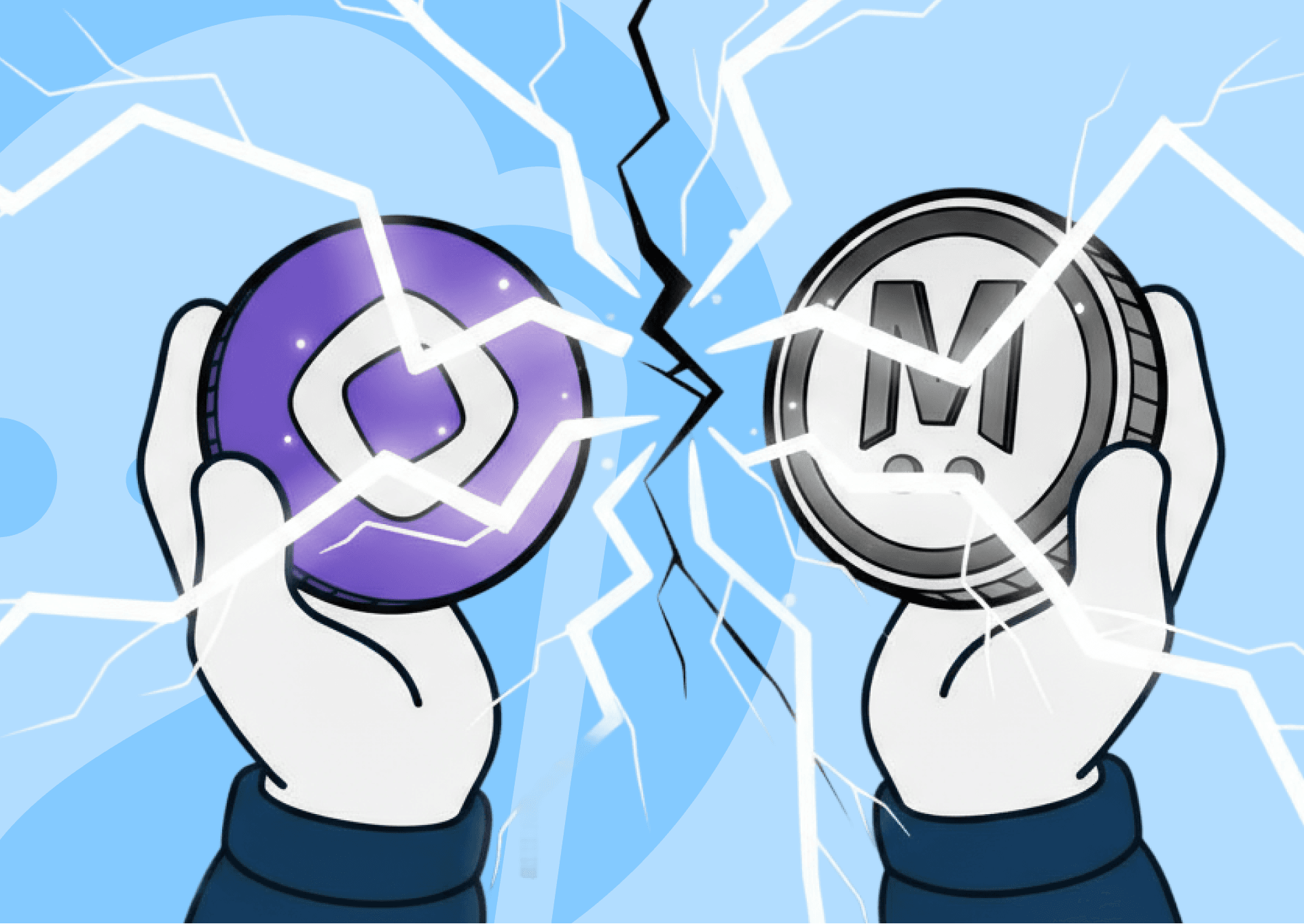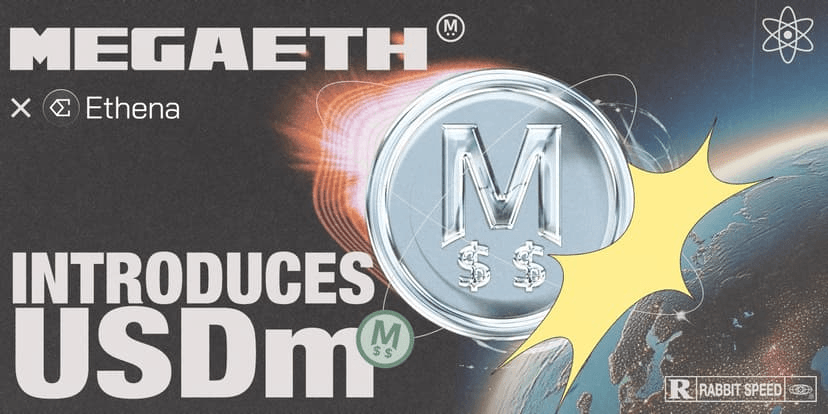Monad vs MegaETH: The Big Year-End Launch Showdown
By Pratik Bhuyan Updated October 30, 2025

Summary
- Monad and MegaETH are two of the most anticipated token launches of 2025, each offering a different approach to high-speed EVM compatibility.
- Monad focuses on deep engineering and parallel execution to deliver high throughput and scalability, while MegaETH emphasizes real-time performance and ultra-low latency.
- Their funding and community strategies differ sharply, with Monad backed by major VCs and MegaETH taking a crypto-native, participation-driven route.
Introduction
If there’s one thing everyone in crypto is watching as 2025 wraps up, it’s the highly anticipated token launches of Monad and MegaETH.
Both are gearing up for token events toward year‐end, setting up what looks like one of the bigger launches of the season. Given that they’re likely to dominate headlines, CT mindshare, and capital flow at year-end, comparing them head-on makes a lot of sense. It’s also worth noting that MegaETH’s public sale attracted approximately $450 Mn in commitments against a cap of around $50 million, representing an oversubscription of roughly 8.9x based on publicly reported figures.
What makes this interesting is that while they both aim to shake up EVM-compatible chains and transaction speed, they approach it from very different directions. Below, we compare them on tech, token sale, branding and community, and help you see which might map better to your goals.
Performance, Architecture, and Transaction Speed
Monad frames itself as a next-gen Layer 1 built from scratch for performance. It boasts 10,000 transactions per second (TPS), one-second block times and “single slot” finality, while maintaining full compatibility with the Ethereum Virtual Machine (EVM). Its architecture uses parallel execution (multiple transactions simultaneously) and a custom database layer to optimise state access.
MegaETH, on the other hand, leans into the “real-time” framing. It positions itself as the first “real-time” EVM chain (or L2) with sub-millisecond latency, huge TPS targets (100,000+ are cited) and a streaming execution model. For example, their testnet showed figures around 20,000 TPS and claimed much higher theoretical ceilings.
So, while both chains promise high performance, they take slightly different roads: Monad builds high throughput through clever parallelism and deferred execution, whereas MegaETH bets on millisecond-level responsiveness and continuous streaming, optimized for real-time apps.
Fundraising, Token Sale, and Community Orientation
The fundraising strategies reflect different philosophies. Monad looks very much like a venture-backed juggernaut. It has drawn significant institutional attention (from firms like Dragonfly, among others), and the narrative around it has often leaned into “technology-first, engineering-first” messaging. That’s allowed it to build a very polished marketing engine - positioning itself not just as fast, but as a deeply researched and rigorously built L1 that serious builders will trust.
MegaETH, by contrast, has taken a more crypto-native route. According to its whitepaper, its MEGA public sale is structured via an English auction, and a chunk of tokens is allocated for active participation and community engagement. Its fundraising history also shows a more grassroots component: while it has raised strategically, it hasn’t leaned purely on big VCs. On top of that, MegaETH seems to reward its most engaged early users: their public-sale structure and bonus campaigns factor in testnet activity and community participation.
That cultural distinction (“institutional engine” vs “crypto-native rally”) sets a different tone for the two networks. It’s not just about where the money comes from, but whom they’re building for: Monad is speaking to serious infra builders, while MegaETH is clearly courting latency-sensitive dApps and real-time users (traders, gamers, payments).
Branding, Hiring, and Ecosystem Strategy
MegaETH’s public face leans hard into the idea of a “streaming future.” Its website, testnet interface, and dev docs talk about real-time APIs, developer primitives for continuous transaction processing, and a seamless experience that feels more like web2 plus trustless rails. It has also revealed a stablecoin, USDm, in partnership with Ethena, which is designed to subsidize sequencer fees and make microtransactions cheaper.

This tells you something about MegaETH’s go-to-market mindset. Along with building high TPS, it’s building for real-time applications, gaming, payments, and micro-interactions. That means hiring, product design, and ecosystem incentives likely skew toward engineers and founders who care about latency, interactivity, and ultra-low friction.
Monad, meanwhile, markets itself more around system capabilities and scalability. Its team foregrounds academic-level research, its developer programs (like accelerators) emphasize serious infrastructure work, and its communications lean into solving the blockchain trilemma in a principled way. That makes Monad feel like a “builders’ chain” for DeFi, composability, and high-throughput applications where architectural rigour matters.
Risks, Trade-offs, and What to Watch
There are real trade-offs for both, and projects like these rarely deliver exactly on day one.
For Monad, the risk lies in complexity. Parallel execution is powerful, but detecting transaction dependencies, re-executing conflicting ones, and ensuring determinism are non-trivial problems. If the system mispredicts dependencies, you may incur re-execution overhead. Also, while low hardware requirements are claimed, actual node economics, decentralization, and validator composition will ultimately determine if Monad really scales without centralizing.
With MegaETH, the risk is decentralization and security. High-throughput, millisecond chains often require specialized sequencers or infrastructure, which can lead to central points of control. Some observers on CT note that MegaETH’s reliance on sequencers and off-chain aggregation could compromise how “trustless” the system feels. Then there’s token distribution risk: auction mechanics are great for price discovery, but complexity (lockups, bonus campaigns, KYC) can exclude some retail participants or favor those who game the system.
There’s also the challenge of delivering on the promised performance: MegaETH targets 100,000 TPS in its whitepaper, but current testnet numbers (20K TPS) are still far from that. And while the USDm stablecoin is a neat design to subsidize fees, it introduces additional protocol risk (peg risk, reserve management) that needs to be handled carefully.
Here’s a quick table to summarize the key comparisons between the two:
Parameter | Monad | MegaETH |
| Core Idea | Parallelized EVM chain built for high throughput | “Instant blockchain” focused on sub-second transactions |
| Tech Approach | Parallel execution with pipelined processing | Custom runtime enabling near-instant finality |
| Performance Goal | ~10,000+ TPS with fast block production | Sub-second latency and global state sync |
| Funding Style | Backed by major institutional investors (Paradigm, Coinbase Ventures) | Funded by crypto-native investors and builders (Dragonfly, Figment) |
| Ecosystem & Branding | Polished, marketing-heavy, structured rollout | Grassroots, builder-first, minimal marketing |
| Target Users | Developers needing scalable, high-throughput L1s | Developers building real-time apps like games or trading |
| Overall Narrative | “Ethereum, but parallelized” | “Ethereum, but instant” |
Final Thoughts
Monad and MegaETH represent two very distinct visions, even though both aim to push Ethereum compatibility into a new performance regime. Monad is the heavyweight: deeply engineered, built for high throughput, and appealing to serious builders. MegaETH is the sprinter: focused on real-time responsiveness, latency-sensitive applications, and a more community-native launch.
If you need deterministic single slot finality and a migration path, study Monad closely. If you need the snappiest possible UX with community-first liquidity and retail oriented launch mechanics, MegaETH may be more aligned with your priorities.
But, as we always say at Beluga, crypto markets can be unpredictable, so it’s best to stay informed before making any investment decisions. Keep an eye on independent benchmarks, audit reports, and the final token sale terms of both projects before committing any capital.
Join the Beluga Brief
Dive deep into weekly insights, analysis, and strategies tailored to you, empowering you to navigate the volatile crypto markets with confidence.
Never be the last to know
and follow us on X








